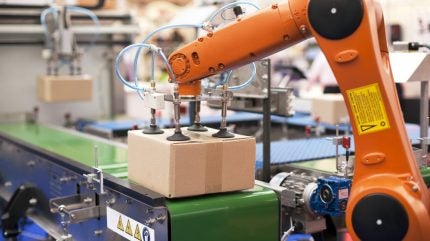
Automated packaging is rapidly reshaping how businesses prepare, protect, and present products. By using advanced machinery and robotics, companies can streamline their packaging processes, reduce labour costs, and improve consistency.
As industries worldwide seek smarter, more sustainable solutions, automated packaging offers lasting benefits that make it a crucial element for manufacturers, retailers, and logistics providers alike.

Discover B2B Marketing That Performs
Combine business intelligence and editorial excellence to reach engaged professionals across 36 leading media platforms.
The rise of automated packaging in modern industry
The demand for automated packaging systems has grown steadily over the past decade, driven by the need for faster production lines and reduced human error. These systems range from simple automated bagging machines to sophisticated robotic arms capable of handling delicate products with precision.
The integration of sensors, AI, and real-time data monitoring enhances the efficiency and flexibility of packaging operations.
One of the main advantages of automated packaging is its ability to operate continuously, significantly increasing throughput compared to manual methods. This not only accelerates order fulfilment but also improves workplace safety by limiting repetitive strain injuries and exposure to hazardous materials.
Industries such as food and beverage, pharmaceuticals, and electronics have embraced automation to meet strict quality standards and regulatory compliance.

US Tariffs are shifting - will you react or anticipate?
Don’t let policy changes catch you off guard. Stay proactive with real-time data and expert analysis.
By GlobalDataFor example, pharmaceutical packaging demands accuracy and traceability that automated systems deliver more reliably than human hands.
Benefits of automated packaging systems for businesses
Automated packaging offers a range of advantages that appeal to businesses of all sizes. First, automation reduces labour costs by replacing manual tasks with machines that work faster and more consistently.
This leads to improved productivity and allows staff to focus on higher-value activities like quality control and innovation.
Accuracy and consistency are critical in packaging, especially for products requiring precise weights, labels, or seals. Automated packaging systems reduce errors such as incorrect labelling or inconsistent fill levels, which can cause costly recalls or customer dissatisfaction.
Modern machines also provide detailed data reporting, enabling better inventory management and compliance documentation.
Sustainability is another important factor where automated packaging shines. These systems can optimise material usage by adjusting packaging size or thickness to match the product exactly, reducing waste.
Some automated lines also support recyclable or biodegradable packaging materials, helping companies meet environmental goals and consumer expectations.
Moreover, automated packaging can easily adapt to changing product lines or packaging designs through programmable settings, making it ideal for businesses requiring flexibility in their operations.
Future trends shaping automated packaging technology
Looking ahead, automated packaging is set to become even smarter and more integrated with digital technologies. The rise of Industry 4.0 means packaging lines will increasingly connect with other manufacturing systems to enable seamless communication and data exchange.
This will improve supply chain transparency and allow predictive maintenance to minimise downtime.
Robotics will continue to evolve, offering greater dexterity and intelligence for complex packaging tasks such as picking fragile items or assembling multi-component packs. Collaborative robots (cobots) designed to work alongside human operators are gaining popularity, combining the best of automation and human oversight.
Artificial intelligence and machine learning will enhance quality control by detecting defects or inconsistencies in real time. This technology can also optimise machine settings automatically, leading to further efficiency gains.
Sustainability will remain a central focus, with innovations in biodegradable packaging materials and energy-efficient machinery reducing environmental impacts.
Automated systems that facilitate the use of minimal or zero-plastic packaging will attract particular attention as consumers and regulators push for greener options.
Ultimately, automated packaging stands as a cornerstone of modern manufacturing and logistics, delivering efficiency, precision, and sustainability.
Its ongoing evolution ensures that businesses adopting these technologies will be well-placed to meet future market demands while reducing costs and environmental footprints.
For any company looking to stay competitive in a fast-changing world, investing in automated packaging is an increasingly essential strategy.





